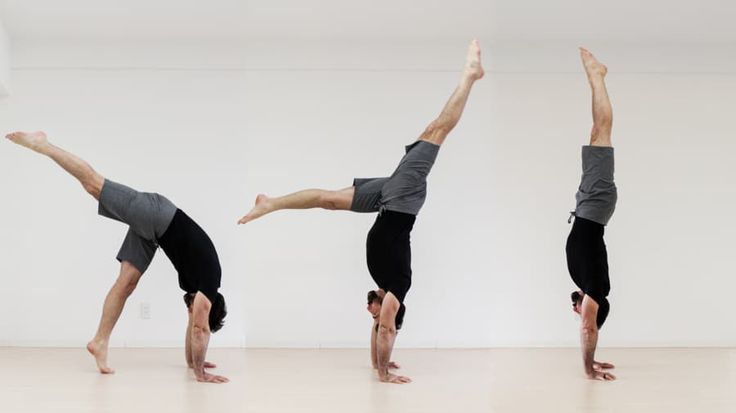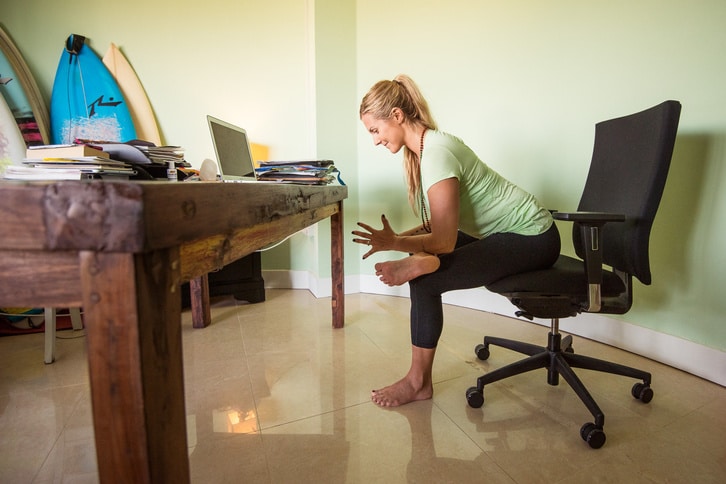
Injuries in yoga are common, but they do not have to be severe. There are several ways to avoid these common injuries. Here are a few things to avoid: Over-stretching the major muscle groups in your neck and back. Avoid over-stretching your hips and hamstrings.
Do not overload the major muscles in your back by over-stretching them
When stretching the major muscle groups in your back, you must be careful not to overextend the muscle groups. Micro tears and strained muscles can occur. This is because stretching should be comfortable, not painful. Holding your breath will make the muscles tighten. Deep breathing through the nose and into your nose can help relax muscles. Don't stretch inflamed muscles for too long, as it will slow down the healing process. You should instead use heat or ice to soothe the pain and gradually introduce the muscle back into your regular stretching routine.

Over-stretching your neck major muscle groups
You should avoid causing injury to your neck and major muscles when doing advanced yoga poses. Over-stretching these muscles can result in neck strains or sprains that can lead into chronic pain. There are many ways to prevent neck injuries.
Over-stretching your hamstrings
In yoga poses, over-stretching your hamstring muscles can cause injury by putting too much strain on the muscles. Many people strain their hamstrings too much by stretching too far or straining the inner thighs.
Over-stretching your hips
Over-stretching can result in a tear. This injury is very common in yoga and can happen during warm-up. It is common for these classes to cause over-stretching of muscles, as the temperature is too high. Participants should not exceed 75 percent of the range in the warm-up phase to avoid injury. This will allow muscles time to recover from the exercise before they can engage in strenuous activity.
A range of motion is required to work within this framework
Working within a range of motion is critical to preventing injuries in yoga. This allows your body prepare for many different movements and stresses. The result is that you are able to move with less risk and have greater mobility and strength. Yoga can also help with agility and endurance.

Case studies
Yoga-related injuries are increasing in number. Between 2001 and 2014 29,590 injuries resulting from yoga practice were treated at hospital emergency rooms. Most of these injuries were sprain/strain. These injuries were more common among younger participants, and less in the older group. Both young and old can benefit from a regular yoga practice.
FAQ
What foods should you avoid after doing yoga?
You may experience a decrease in energy levels if you avoid certain foods. It can also make you feel bloated, or cause stomach cramps. If you feel tired after practice, you may want to eat something light and nourishing.
I am already doing some form of physical activity. What are my options for yoga?
Yes! Yoga can help you train even if your physical activity is not too high. Yoga can be combined with other activities like running, cycling, lifting weights, and swimming to achieve greater results.
This is because yoga helps you focus on proper breathing techniques, which help you burn calories faster.
Yoga can also help you increase your endurance. Yoga has many benefits, so it doesn't matter if you're an advanced or beginner yogi.
Is yoga a good option for pain management?
For people with chronic back pain, yoga may be an effective treatment. It can help them increase flexibility, balance and strength as well as reduce stress levels.
Before starting any type of exercise program, it is important to check with your doctor.
How does yoga change your body?
Yoga is a great way to relax and stretch. Yoga makes you feel good. Yoga increases flexibility and strength, as well as reducing stress. This can lead to improved sleep quality, better concentration, and higher energy levels.
Yoga can also increase blood flow, which will make you less susceptible to getting the flu. This happens because yoga is a deep practice of breathing that increases oxygen flow to your brain.
Yoga relieves tension, pain, and helps with stress. These postures improve posture and strengthen joints and muscles.
To keep your body and mind healthy and happy, you should regularly practice yoga.
Statistics
- Gentle yoga has been shown to ease some of the discomforts of tender, swollen joints for people with arthritis, according to a Johns Hopkins review of 11 recent studies. (hopkinsmedicine.org)
- About one in seven U.S. adults practiced yoga in the past 12 months, according to a 2017 national survey. (nccih.nih.gov)
- The American Psychological Association recently shared that 84% of American adults feel the impact of prolonged stress (5). (healthline.com)
- Lock in 25% off your Founding Member rate. (corepoweryoga.com)
- The people in the yoga group were 37 percent more likely to have quit smoking by the end of the 8-week program. (nccih.nih.gov)
External Links
How To
Is yoga a great workout?
Yoga isn’t only for those looking to lose weight. Yoga helps you to develop flexibility, balance coordination, strength and calmness.
Yoga isn’t just exercise. Instead, it’s an art form. These poses can be used to help you relax and meditate. They improve posture, concentration, and respiration.
A "yogi" is someone who practices yoga. Yogis follow various forms of yoga, including Hatha, Ashtanga, Iyengar, Vinyasa, Bikram, Kundalini, Yin Yang, and Restorative.
There are many types of yoga, but they all have similar goals. Each type is focused on different aspects. Yoga styles include Hatha, pranayama (meditation), and pranayama (pranayama).
Some yoga exercises that require no equipment are:
-
Sun Salutation: This series of 12 postures begins with a forward bent, and then 10 additional poses.
-
Warrior Pose - While holding a stick or staff, a warrior pose is done.
-
Triangle Pose – This is a pose where you raise one leg behind your head and bend at the knee.
-
Standing Forward Bend - This pose is performed by sitting on the floor with legs straight and then folding forward at the waist.
-
Seated Twist - This pose is performed while seated on a chair or mat.
-
Cobra Pose - This pose is performed lying flat on your back with arms overhead.
-
Child's Pose – This is the position where you lie face-up on the ground.
-
Cat/Cow Pose- This is a combination of a cat/cow pose. Keep your head down and raise your upper body above the ground. Then roll over onto your side and place your hands under your shoulders.
-
Head Tilt: This is when you tilt your head back and keep your eyes closed.
-
Shoulder Stand – This is a standing position in which your feet are raised above your head.
-
Tree Pose – This pose involves kneeling on your heels with your hands beneath your shoulders.
-
Bow Pose- Bend forward from your hips into bow pose and place your hands on to the ground.
-
The corpse pose is held for five to ten minutes.
-
Mountain Pose: This pose is known as mountain pose, because it requires you to stand tall and keep your spine straight.
-
Legs Up the Wall Pose- This pose can be achieved by hanging upside-down at a wall.
-
Side Angle Pose – This is achieved by leaning against the wall and placing your right arm near the wall.
-
Plank Position - This position is achieved when you lie flat on your stomach and extend your left arm and right foot away from each other.
-
Bridge Pose - This pose is obtained by balancing on your elbows and toes.
-
Reverse Table Top Poses - To achieve this pose, lie on your stomach while reaching your arms toward your ceiling.
-
Handstand – This pose requires strength and balance. This pose requires you to hold on to two walls or a doorframe.
-
Half Moon Pose is also known by the name Hero Pose. It involves standing on your hands with your toes.
-
Headstand (or Handstand) - This pose requires excellent balance and strength. This pose is possible on a brick wall or on a doorframe.
-
Forearm Balance - This pose is performed on your forearms resting on a tabletop.
-
Spinal Twist: This pose is where your belly meets your arms.
-
Supported bound angle pose - This pose needs support and balance. To support your body, you will need to locate a strong object such as a tree branch or an old beam.
-
Wide Leg Forward - This position involves extending your legs and touching your toes.
-
Single Pigeon Pose -- This pose is similar in style to the forward fold with one leg, but it only involves one leg.
-
Extended Puppy Dog Poses - This pose can be very relaxing. It involves extending your legs outward and bent your knees.
-
Standing Forward Bend - This is a pose where you are seated cross-legged, stretching your calves and hamstrings.
-
Crow Pose – This pose can be difficult but rewarding once you are able to master it. It is done by raising your arms above your head and lowering them until they parallel to the floor.